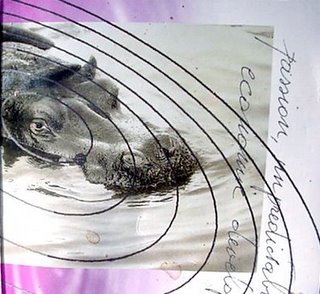

Ernesto Sirolli wants bureaucracy to become more responsive to individual situations – a ‘one size fit all’ mentality destroys initiative and potential entrepreneurs.
Instead Ernesto wants to develop passionate people but, he warns the bureaucrats, ‘passionate people are irrational people, people who do what they do, not because they seek comfortable, secure, predictable lives, but because they are propelled by inner feelings which make them take action.’
Ernesto pioneered a novel approach to local development based on 'facilitating' the transformation of local good ideas into viable businesses. He argues that society should give up its pushy and paraniod pursuit of trying to motivate young people.Instead, we should let them discover what really grabs them, and then be available with the best knowledge and support.
Those who work with people have responsibity, he says, is to ensure, ‘people grow, transform dreams into rewarding work- about bringing changes in society by directly tapping into the source of innovation and energy.’
This of course includes all teachers and schools.
Unfortunately most organizations reflect the apposite thinking believing that, ‘good ideas come from the top’. This may have been OK in the ‘industrial era’ and for ‘traditional’ schools but the future will require, ‘the mobilization of every ounce of intelligence…the brain power of all.’
And this, with our current school 25% failure rate, is not currently being achieved.
New organizational thinking ‘taps into the talents of all so all can contribute’. Applying this to all organizations is the real challenge. Facilitation, Ernesto believes, is the key. Facilitation is a way of tapping into this pool of talent and is a particular challenge to all those who work in education.
Facilitation is the basis of ‘person centred’ or ‘client centred’ approaches and Ernesto writes, in many cases, it is about ‘removing obstacles and having faith in the ability of all people.’
The trouble, he writes, our institutions, which are theoretically about ‘serving the public’, often do so in autocratic ways; so much so it is, ‘almost impossible to conceive a different system.’
All too often in education we, parents and teachers, assume responsibity for learning outcomes and by doing this we remove the initiative from the learners. Ernesto says, ‘we forget that ‘adulthood has to be achieved through their deeds and need to excel.’
As it is, he says, ‘the great majority of individuals resent what was imposed on them during their years of formal education. A good education system couldn’t exist without believing that firstly people want to learn, and that they know what they want to learn. We should begin trusting them rather than trying to achieve the impossible dreams of the planners and bureaucrats.’
‘Formal school could be used as the place where you meet with the facilitators who will help you shape your own unique path towards personal and professional fulfillment.’
This leads Ernesto to say that, ‘such a belief in peoples intrinsic wish to grow, allows for a change of attitude towards education, the national curriculum would be tempered by a degree of responsiveness which is not seen in today’s schools.’ Particularly, he continues, ‘with the absurdity and waste of talent focusing the same curriculum on really different people.’
Ernesto believes that, ‘from an economic point of view it is important for politicians and schools to realize that the so called ‘non-academically gifted’ kids who now fall between the cracks of the current system are as important and precious as those who go onto ‘higher’ education,’
To respond to each individual student’s needs require ‘experts’ (at whatever level) to ‘resist the temptation of deciding what is good for people.’ Ernesto believes we should be, ‘very skeptical of ‘experts’, who only use mathematical data to create images of a perfect society,’
The answer, according to Ernesto, is for ‘bureaucrats to stop patronizing us, stop pushing us around, stop deciding what is good for us, and administering it whether we like it or not.’ ‘Experts’ ought not to be trusted without question, ‘we need to know why we should take a certain action. We have the right to ask questions and get answers.’
As a result, ‘bureaucrats will increasingly think more carefully about imposing anything on anybody’. ‘Today more and more people, individuals, the ‘battlers’, are able to take on the bureaucracy on and get some justice’. ‘The tide is turning’, Ernesto believes, ‘away from authoritarianism in every field’. ‘The trend is towards respect and empowerment.’
The challenge for ‘our’ future orientated ‘experts’ is to remodel ‘our’ institutions to facilitate people to grow on their own. This, he says, will require ‘a new breed of professional bureaucrats who are not only natural ‘peoples people’, but who are trained to listen and respect’.
As Sirolli says this will result in revolution of Copernican magnitude.
And when this happens we will create a society that can capture and utilize the energy of all people to ‘propel our society through exciting uncharted waters.’
I am with Ernesto!
Ernesto's web site

















